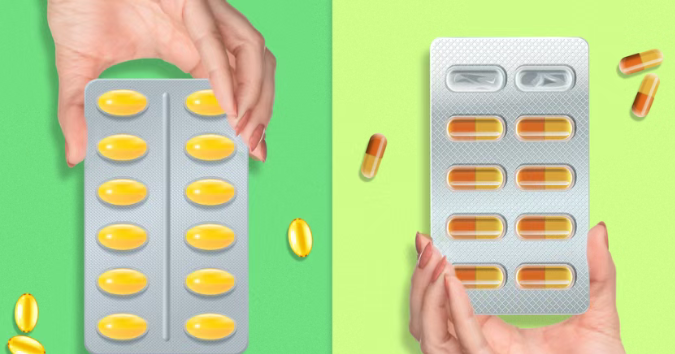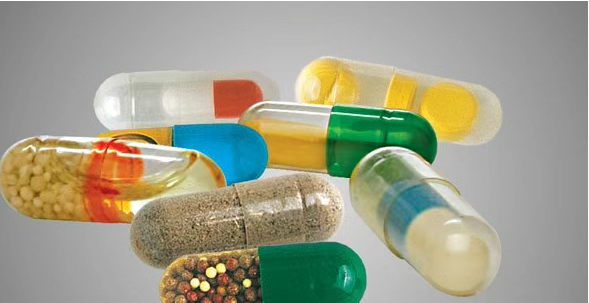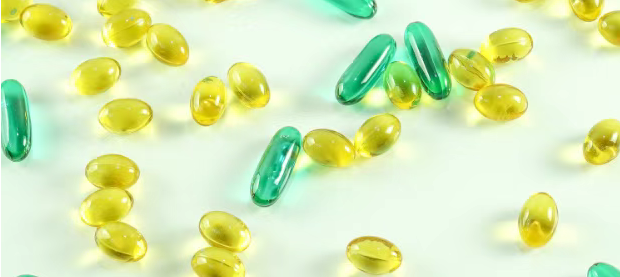
Gelatin is a widely used material in the pharmaceutical capsule industry, valued for its safety and excellent molding properties. But did you know that there are significant differences between the gelatin used in hard capsules and soft capsules? This article will help you understand each type, from composition and production process to practical applications.

Gelatin in Hard CapsulesHard capsules
Also known as two-piece capsules, are the most common type in the pharmaceutical industry. They usually contain drugs in powdered, granulated or pelleted form. 1. IngredientsGelatin for hard capsules is usually made from the following materials:Gelatin: from the skin and bones of cows or pigs.Additives: include water, colorants, preservatives (if required).This gelatin has a high Bloom strength (200-250 Bloom g), which provides elasticity while maintaining the appropriate hardness of the capsule.

2. Production Process Gelatin is dissolved in hot water to form a solution. The solution is dipped into a mold to form the two halves of the capsule. The capsule is dried, trimmed, and assembled.
3. Application
Hard capsules are ideal for packaging heat-sensitive and hygroscopic drugs. They are also cost-effective and are often used for probiotics, vitamins, and prescription drugs.
Gelatin in soft gelatin capsules
Softgels are single capsules that usually contain the active ingredient in liquid or gel form. 1. CompositionSoftgels are made of gelatin mixed with other ingredients:Plasticizers: such as glycerol or sorbitol, to create flexibility.Preservatives: to extend the shelf life of the product.This type of gelatin has a low gel strength (150-200 Bloom g), which is suitable for making soft but durable structures.

2. Production process The production of soft gelatin capsules requires advanced technology: liquid gelatin is poured into a mold and formed. While the gelatin is still soft, the active ingredient is injected, and the capsule is sealed and dried to complete the process.
3. Applications Soft gelatin capsules are best suited for oil-based or gel-like active ingredients. Common products include fish oil capsules, vitamin A and D supplements, and some painkillers. Comparison of gelatin in hard and soft gelatin capsules
| standard | Hard Capsules | Soft Capsules |
| Frozen Power (Bloom g) | 200-250 | 150-200 |
| Viscosity (mPa.s) | 3.5-4.5 | 2.0-4.0 |
| Gelatin Types | Acid/alkaline leather/bone glue | Acid/alkaline leather/bone glue |
| Ingredients | Gelatin, water, colorant | Gelatin, plasticizers, preservatives |
| Production process | Simple two-piece assembly | Complex single pieces |
| Filling materials | Powder, granules | Liquids, emulsions |
| Cost | Low | High |
There are two basic types of gelatin capsules: 1) hard capsules or hard caps; 2) soft capsules or soft gels. Hard capsules consist of two cylindrical shells, each closed at one end. The upper part is called the capsule cap and has a slightly larger diameter than the lower part, called the capsule body. The two parts fit perfectly together to form a sealed whole.
● Before filling with active ingredients, hard capsules need to be produced first. In a second step, the contract manufacturer or brand owner fills the empty gelatin capsules with the active ingredient or drug.
● Soft capsules (or softgels) are sealed, single-piece capsules that contain a liquid or semi-solid fill. Unlike hard capsules, soft capsules are filled simultaneously during the production process. Gelatin is an indispensable material in capsule manufacturing, and each capsule type is optimized for specific uses. Hard capsules are suitable for preserving powdered drugs, while soft capsules excel at preserving oil-based solutions. Differences in ingredients and production processes highlight the unique advantages of each type.
Post time: May-19-2025